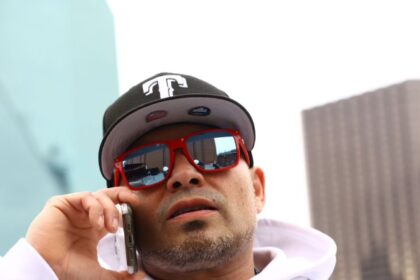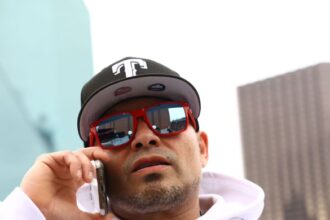The Story of Chris Nilan: An Unlikely Hero in the Fight Against C.T.E.
Page 68 of Boston University’s Hope Study questionnaire asks, “Have you ever injured your head or neck in a fight or been hit by someone?”
For Chris Nilan, a simple yes could never convey the whole story.
The answer stretches out over 300 bare-knuckle fights as a professional hockey player, and countless other brawls on the street corners of Boston beginning in his childhood. Most times, Nilan was the one dispensing the punishment. But hockey fights almost always involve mutual, bone-crushing blows, fists jackhammering from powerful shoulders, sometimes fracturing bones, tearing tissue and rattling brains.
The Hope Study, run by B.U.’s Chronic Traumatic Encephalopathy Center, has been measuring the brain health of living subjects with Alzheimer’s disease and related dementias since 1996. Nilan, curious about the condition of his brain after years of furious on-ice battles and eager to help with the research, turned to B.U., where participants return each year to repeat extensive testing, and eventually donate their brains. C.T.E. can only be diagnosed posthumously, but the Hope Study’s testing can provide valuable clues while patients are alive.
One of the key elements of the research is the background questionnaire, where subjects detail any history of brain impacts.
Nilan had played only a few N.H.L. games when, one night in 1980 as a rugged rookie for Montreal, he dropped his gloves and fought Boston’s Stan Jonathan and Terry O’Reilly, two of the most feared pugilists in league history. The bouts came in consecutive periods — hockey’s equivalent of boxing Muhammad Ali and Mike Tyson within an hour of one another.
Nilan, who was labeled Knuckles before he even turned pro, survived that night, plus 12 more seasons of fighting and scoring goals (118, including the playoffs). He won a Stanley Cup in 1986 with Montreal and was named an All-Star in 1991. Over his 13 years in the league, he fought an astonishing 316 times, the third most in N.H.L. history, according to the N.H.L. Fight Card database.
All of it was followed, coincidentally or not, by years of agonizing drug addiction, alcohol abuse and anger issues before Nilan settled into a quiet life in a Montreal suburb. An engaging, humorous sort with a Boston accent thicker than Chahles Rivah sludge, Nilan now hosts the “Raw Knuckles” podcast, fishes, cooks, reads every day — mainly books on military history — runs addiction recovery groups and spends quiet time with his fiancée, Jaime Holtz.
A Family History of Dementia
On April 17, Nilan entered the Hope Study. He and Holtz answered background questions from their home over a video conference call with researchers, who asked about Nilan’s family and behavioral history, his moods, his memory, his mother’s dementia and his career on the ice.
A few weeks later, he went to Boston for the cognitive and medical testing, and a month after that he received results that can give participants a snapshot of their brain health at that moment.
Nilan went into the study feeling healthy and robust, perhaps even a bit lucky. He empathizes with players who suffered from the same dangerous work that he did, but points no fingers.
Researchers have long suggested that the more hits to the head someone receives, including subconcussive ones, the more likely they are to develop cognitive and neurological problems later in life. A study earlier this year of football players’ brains suggested that the cumulative impact of multiple hits can also play a role.
Thirty years after retiring from an uncompromising, violent and successful career, and with the encouragement of the widow of a fellow enforcer who had the disease, Nilan signed up for the Hope Study.
“I don’t worry about having C.T.E.,” Nilan said. “But sometimes you wonder.”
Ten years ago, there might have been more concern. Nilan’s past substance abuse and outbursts of rage mirror some of the behavior exhibited by other hockey enforcers following retirement, players like Bob Probert, Derek Boogaard, Wade Belak, Todd Ewen and Steve Montador. All of them were diagnosed with C.T.E., which can only be detected after death.
More than a dozen hockey players have been diagnosed with C.T.E., and not all of them fighters. The most recent was Henri Richard, a small, skillful center for the Canadiens who died in 2020, the kind of player Nilan was paid to protect.
Nilan is 65 and sober now, still with a sharp wit and a vivid memory of a tumultuous and violent life that intersected closely with some of Boston’s most infamous figures, including James Bulger, the murderous crime boss, known as Whitey, who was Nilan’s father-in-law.
‘A Window Into the Brain’
A year ago, Dani Probert was a guest on Nilan’s podcast. They discussed her husband’s career and the time he tangled with Nilan on the ice. They recalled how Nilan and Bob Probert had become good friends after hockey, Probert’s addictions and his death in 2010 from a heart attack, at 45 years old.








